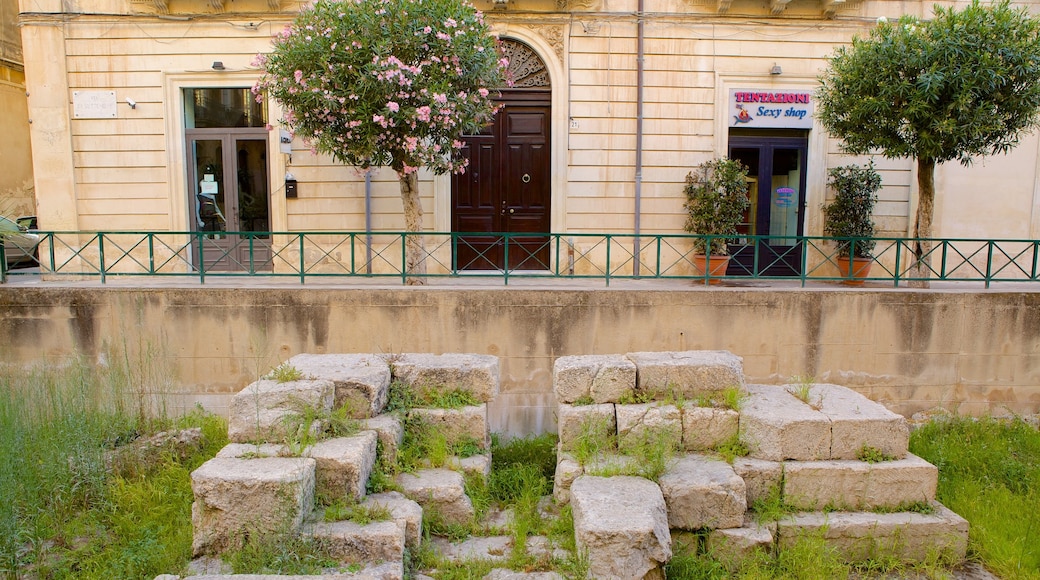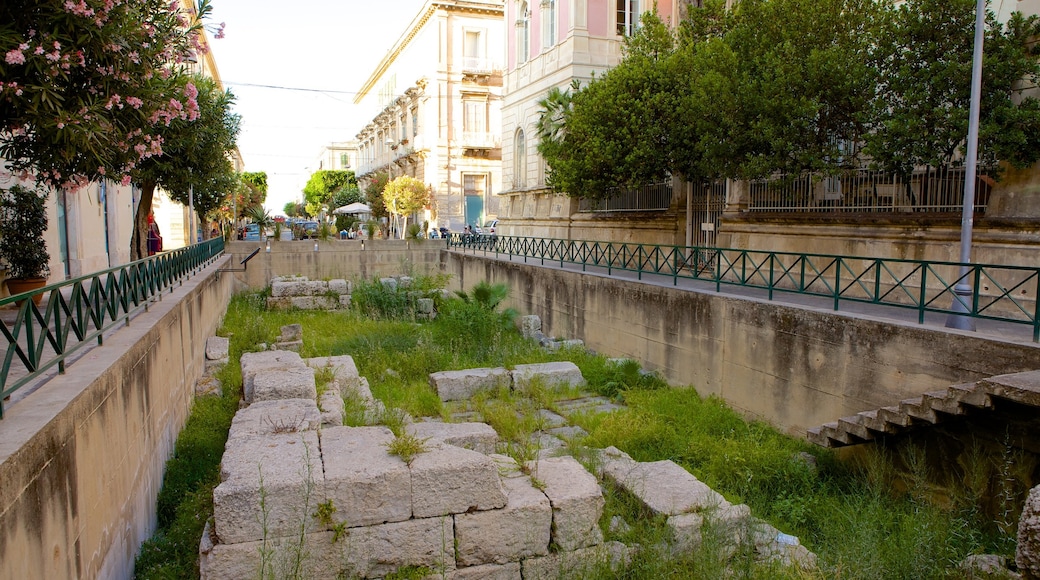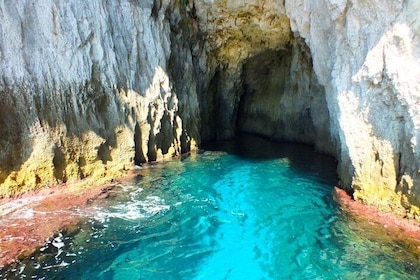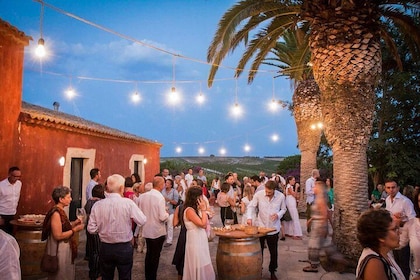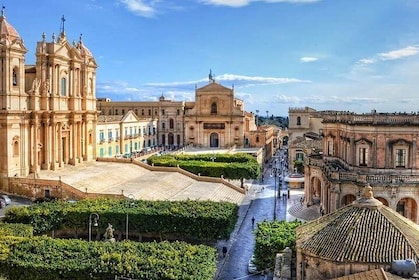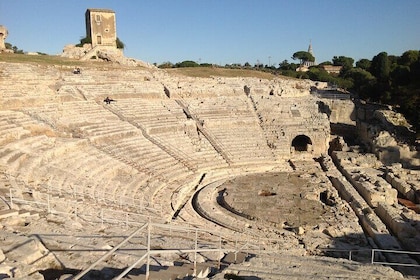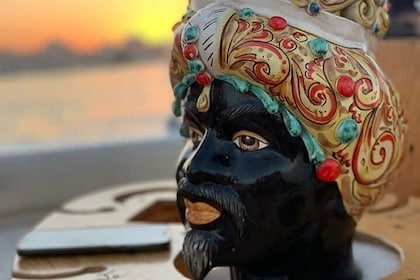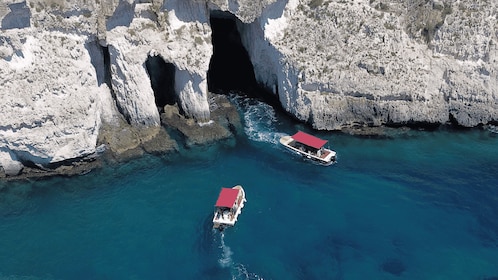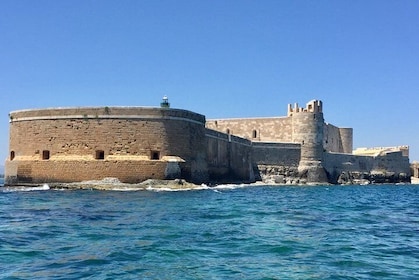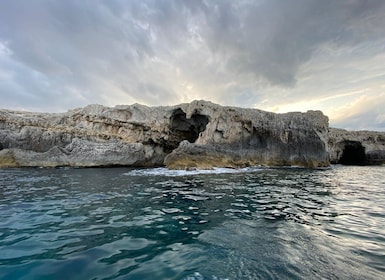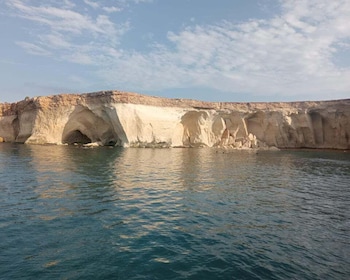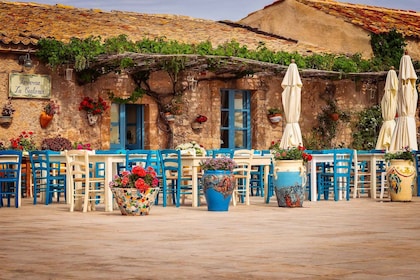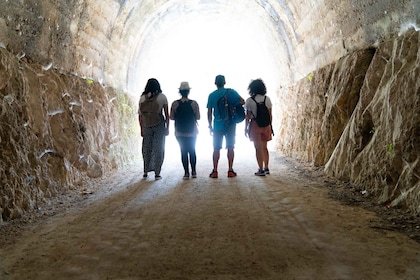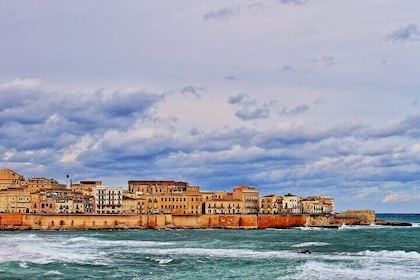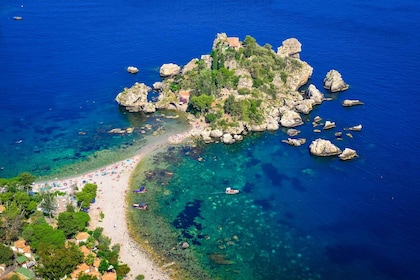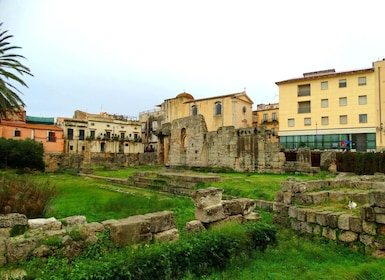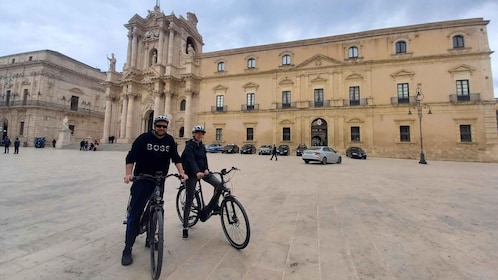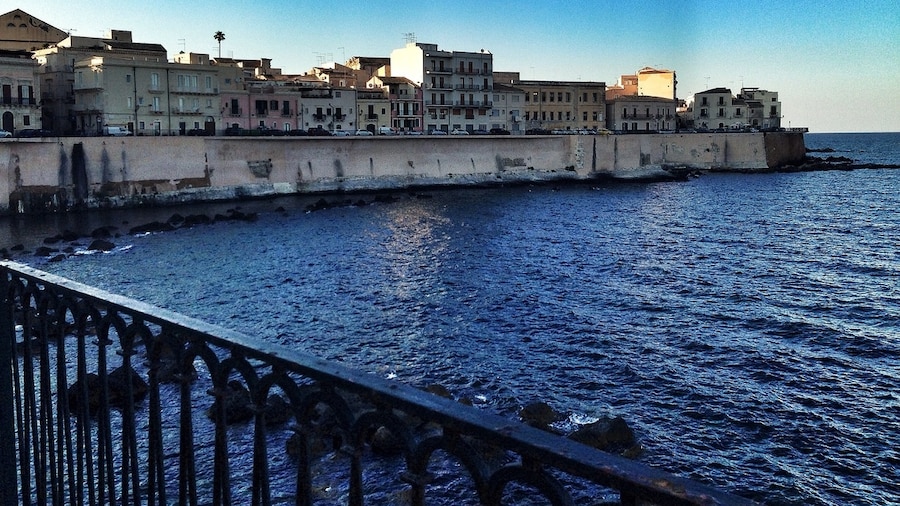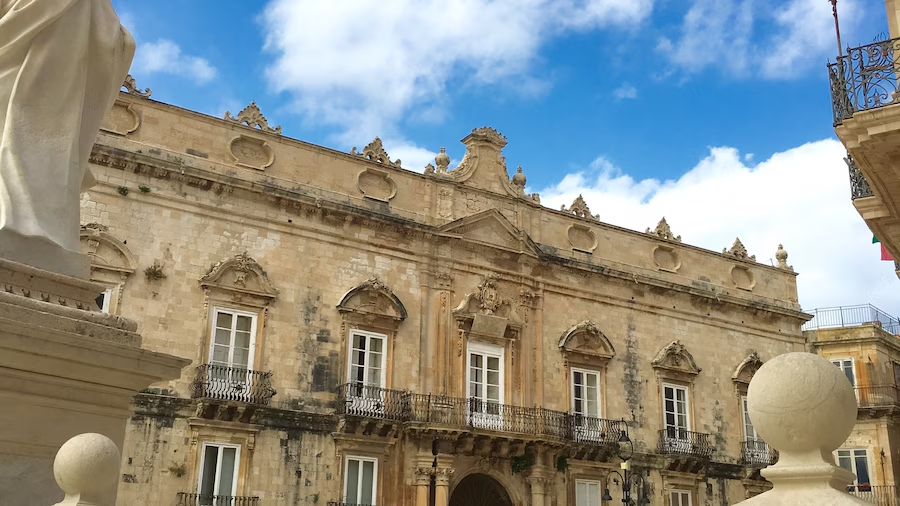As you walk around the ancient ruins of the Temple of Apollo, imagine the huge Doric columns, thick walls and wide walkways as they would have looked over two millennia ago. Learn about the building’s fascinating history and the many purposes it has served between Greek times and now.
When you step inside the grounds, the first things you will see are the two high Doric columns that formed part of the original hallway. These are the last of their kind in Sicily and date back to the temple’s origins in the sixth century B.C. Nearby, look for the eastern façade, the largest remaining part of the temple. The decorative terracotta that once covered the wall has been removed, but it remains a remarkable piece of ancient architecture.
Examine the ruined walls. Try to picture the rooms, shrines and hallways filled with ancient Greeks worshipping their God, Apollo. Continue around the outside of the temple and see the temple’s last remaining architrave atop one of the columns. This architectural molding offers a sense of the true size of the temple that once stood here.
Look for signs and notices on the railings surrounding the temple. These informative plaques show how the temple would have looked in Greek times and offer a fascinating narrative of the building’s history. Learn how the temple was transformed into a Byzantine church, an Arabic mosque and finally a Spanish barracks in the 16th century. Find out how the temple lay forgotten until excavation began in 1938.
The Temple of Apollo is located close to the heart of Syracuse on the small island of Ortygia. There is no admission fee, although you can no longer walk around the interior of the temple. Nearby, find an array of excellent cafés and restaurants. Guided tours are available. Ask at the tourism office in town for information.



